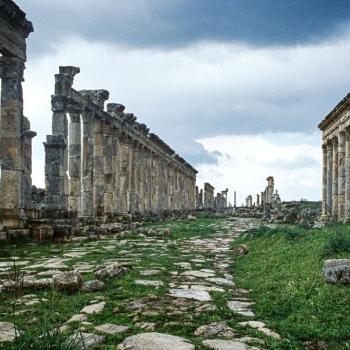A few months ago I wrote a long Instagram post (or long to Instagram anyway) about Shahmaran, a guide for healers, as I concluded in it. However, as time passes and you revisit your writing, I would also add that this figure is also about love. In case you missed it, here it is copypasted:

Shahmaran (Persian: شاهماران Şahmaran, lit. ‘Shah (king) of the Snakes’,) is a mythical creature, half woman and half snake, found with different variations in the folklore of Iran, Anatolia, Iraq, and of the Kurds. The name comes from the Persian words “Shah,” a title used for Persian kings, and “Maran,” which means snakes.
According to one version, the first human Shahmaran encountered was a young man named Camasb, who gets stuck in a cave after he tries to steal honey with a few friends. After they leave him alone in the cave, Camasb decides to explore it and finds a passage to a chamber that looks like a mystical and beautiful garden with thousands of off-white colored snakes and the Shahmaran living together harmoniously.
It is said that Shahmaran and Camasb fell in love and lived in the cave chamber, where the creature taught him about medicines and medicinal herbs. However, Camasb missed living above ground, so he tells his lover he will not share the secret of her living there while he’s away.
Many years pass and the king of the town of Tarsus becomes ill. The vizier discovers the treatment of his condition requires the Shahmaran flesh and so Camasb tells the townspeople where she lives. The legend says that Shahmaran said “blanch me in an earthen dish, give my extract to the vizier, and feed my flesh to the sultan.” When Shahmaran is taken to the town and killed, the king eats her flesh and lives, the vizier drinks the extract and dies, and Camasb drinks the water of Shahmaran, becoming a doctor, by gaining Shahmaran’s wisdom.
I think this myth shows the duality in nature, and I’m very inclined to think that the vizier was plotting against the king (although it may be Disney’s Aladdin influence.) Snakes have been a symbol of magic and wisdom in several cultures, just as in this case, along with being the bearers of healing knowledge. I also like to think about Shahmaran as a healing master, a guide for healers.

I also said a bit ago that I got the image of a white snake when I tried to connect with Hilal, the pre-Islamic God of Cycles, Trickery and the Crescent Moon, like the snakes in Shahmaran’s garden, a possible connection I will explore in the future, that is if it turns out not to be a mere coincidence, or maybe that Hilal is also a God of snakes along with Wadd. However, revisiting the myth of this beautiful creature made me see it with different eyes.
Unlike Al-‘Uzza, whose healing seems to be based is love for me, Shahmaran is more about accepting the ultimate sacrifice for our beloved, not because they are more worthy than us, but because we love them enough to give them whatever they need if they are in dire circumstances. I’m sure we can all think about someone who would do that, from a parent, relative, friend, lover, or even a pet.
Shahmaran’s story made me think about all the times someone put my needs before theirs, mostly my parents, but also every time it happened in a relationship, and every time the tables turned and I did it for someone else as well. Rasheed Ogunlaru said that “only love and compassion can bring true and lasting transformation,” and I agree with him.
Like a snake changes skin every now and then to keep growing up because, unlike other animals, there comes a time when their skin doesn’t allow them to get bigger. Although painful, snakes know pain is only temporary, it will not be forever, and many good things can happen before they have to do it again. Love is very similar to this.

No relationship is perfect at the beginning, no love story starts, develops, and ends in the blink of an eye. There are fights, tears, screams, hurt, and much more, but a good relationship can be born from moments like these. Relationships that are worth it ask you to shed your skin, grow more than before, help you in the process, and lead you to a better and brighter version of yourself.
Shahmaran knew her time had to end at one point, and she decided that it would be by love’s hand. She alone decided who she would save and condemn and, of course, the first and biggest winner was her lover. Far from meaning that we should kill ourselves to demonstrate our passion, this story reminds me of how powerful love is and can be, what it can reach when it is real, and how it can change a person if they are the right one.
For me, this is a story of love that teaches about sacrifice, healing, and (why not? Because how else would she know about the vizier?) divination and psychic development. Snakes have a lot of bad fame, but the more I read about them the more I’m sure they are actually heavily misunderstood. In that regard, Shahmaran is also an agent of change and cycles, like Hilal, an advocate of love, like Al-‘Uzza, and an important figure to keep in mind. Regardless of your form of love, if it’s sincere and wholesome, may it be blessed by the King of Snakes.
You who gave it all in the name of love,
You who left your garden for sacrifice,
You who healed and killed with blood,
You who paid the ultimate price,
Bless this bond for all the days to come.
















